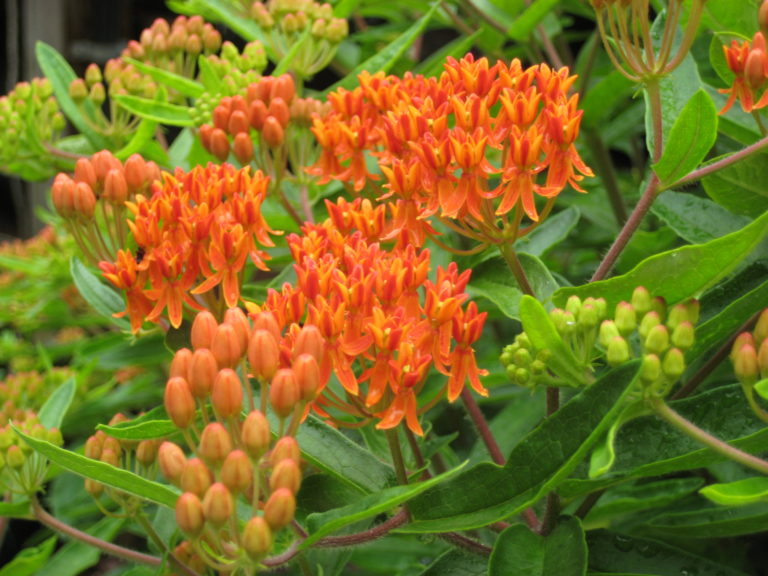NURSERY HOURS
Wednesday: 10-4, Thursday: 10-4, Friday – Saturday: 10-4, Sunday: 12-4
Asclepias tuberosa

Butterfly Weed, famous for its relationship to the endangered and beloved Monarch butterfly, nevertheless deserves a place in a perennial garden purely on aesthetic merits. It is a sun-loving, 1-2-ft, mound-shaped plant with dark green foliage and contrasting, bright orange, long-lasting flower clusters. These, in time, produce lovely pods of silky-threaded seeds which are carried by wind. In addition to providing foliage to feed the larvae of the Monarch, its flowers are also nectar sources for many other species of butterflies as well as for bees and other insects. Butterfly Weed has a deep taproot, and so is not easily transplanted. This root material was used in the past to treat Pleurisy, accounting for one of its common names. Butterfly Weed may seed out some, if seeds are not collected first. This member of the genus does not exude latex when cut as other milkweeds do. It is a roadside inhabitant, and appears to be deer resistant as well as drought tolerant. It is native to most of our states, and within NC it is reported to occur in all counties but one.
